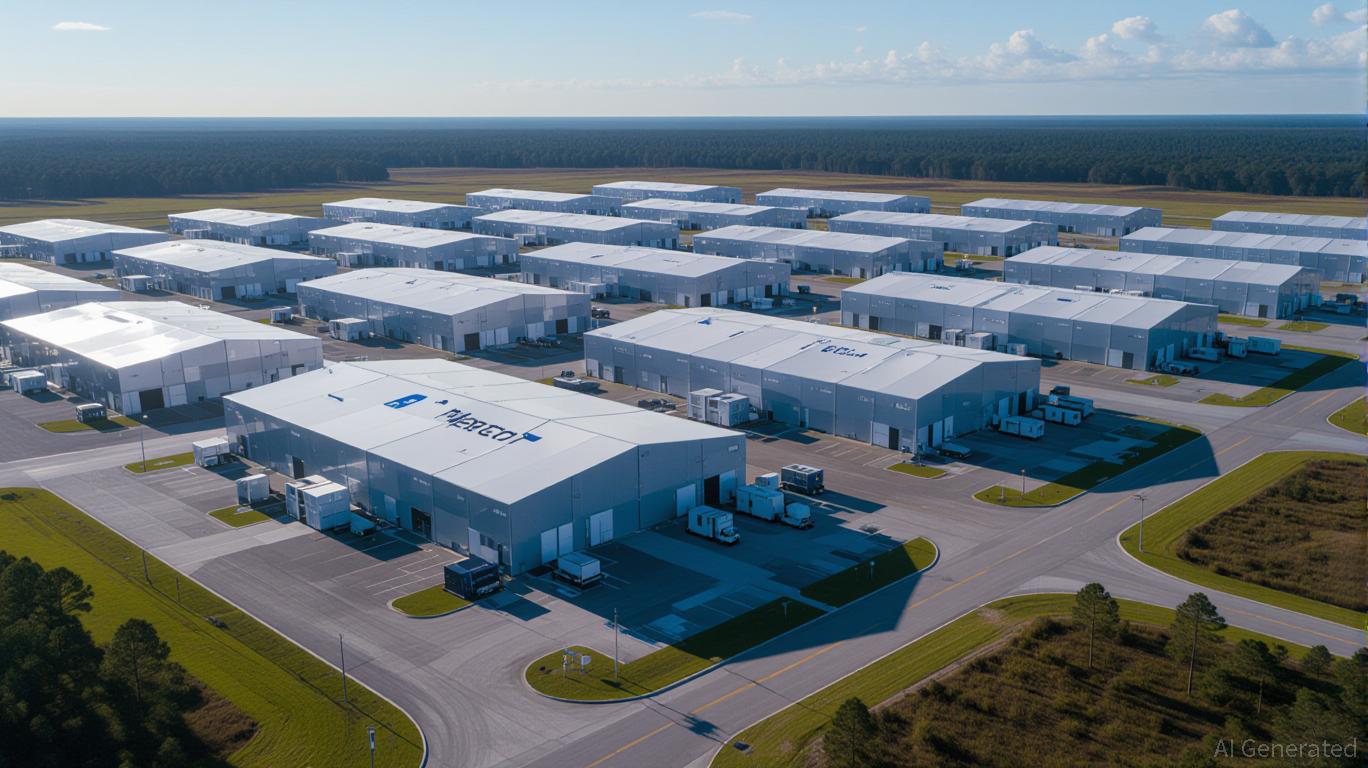AInvest Newsletter
Daily stocks & crypto headlines, free to your inbox
Meta's recent $65 billion capital allocation to AI data centers and talent acquisition signals a bold pivot to seize control of the generative AI landscape. This strategic shift—centered on gigawatt-scale infrastructure like the Prometheus and Hyperion projects—represents both an opportunity and a high-stakes gamble. While the investments aim to outpace rivals like
and in compute power, they also expose to risks of capital inefficiency, regulatory pushback, and execution hurdles. For investors, the question is clear: Does this pivot position Meta as a buy for long-term AI thematic exposure, or is it a speculative bet with uncertain returns?Meta's 2025 AI strategy hinges on two pillars: massive data center buildouts and aggressive talent acquisition. Its Prometheus facility in Ohio, set to come online in 2026, will deliver 1 gigawatt (GW) of compute power, while the 5GW Hyperion in Louisiana—projected to reach full capacity by 2030—will rival Manhattan in scale. These “superclusters” leverage a novel “tent” design, slashing construction time and costs by using prefabricated modules. Yet this speed comes with trade-offs: the lack of traditional redundancies, such as backup generators, relies heavily on on-site natural gas plants and grid stability.

The goal is clear: outspend competitors to secure computational supremacy. Meta's 2025 capex for AI data centers has surged to $60–65 billion, a 60% jump from 2024's $40 billion. This investment is paired with a talent overhaul: hiring stars like Scale AI's Alexandr Wang and Safe Superintelligence's Daniel Gross, with offers reportedly topping $200 million over four years to lure talent from rivals like OpenAI. The message is unequivocal—Meta is doubling down on compute and expertise to build the next generation of generative AI.
While Meta races ahead, rivals are not standing still. Google's $25 billion investment in data centers and $3 billion in hydropower plants emphasizes sustainability and grid alignment, contrasting with Meta's fossil fuel reliance. Microsoft's $80 billion AI infrastructure push, spanning 40 countries, prioritizes geopolitical influence and trusted ecosystems. OpenAI's $500 billion Stargate project, meanwhile, aims to build 20 Texas-based data centers, targeting 100,000 jobs and compute parity with Meta.
Data Query: "Meta's 2025 AI capex ($65B) vs. Microsoft's ($80B)"
The competition is fierce. While Meta bets on scale, Google and Microsoft are hedging with cleaner energy and global reach. OpenAI's partnerships (e.g., with
and NVIDIA) suggest a more collaborative model. For Meta, the risk is clear: over-investing in a capital-intensive race without a clear path to monetization could strain its balance sheet.Capital Intensity: Meta's $65 billion capex in 2025 alone—over 30% of its 2024 revenue—raises concerns about ROI timelines. Competitors like
(AWS) and Google have built-in monetization through cloud services, whereas Meta's AI revenue (via tools like Llama) remains nascent.Regulatory Scrutiny: The EU's AI Act and U.S. antitrust probes loom large. Meta's data center energy use—already linked to water shortages in Georgia—could face stricter environmental regulations. Meanwhile, talent poaching and large-scale compute hoarding may draw antitrust attention.
Execution Challenges: Integrating top-tier AI talent into Meta's culture is no small feat. Past missteps, like the 2022 "AI lab shakeup," hint at internal friction. Additionally, Meta's reliance on
GPUs (which account for 1.3 million units by 2025) exposes it to chip shortages or rising costs.For long-term thematic investors focused on AI's transformative potential, Meta's pivot presents a compelling opportunity. Its scale advantage in compute and data—paired with Zuckerberg's willingness to “double down”—could cement its position as a leader in generative AI, particularly in consumer-facing applications (e.g., Instagram, WhatsApp).
However, near-term risks are substantial. The stock's valuation, already strained by flat revenue growth, could face downward pressure if capex outpaces ROI. Investors should weigh the opportunity cost of betting on Meta versus more diversified plays like NVIDIA (GPU dominance) or Microsoft (cloud + security).
Recommendation:
- Bullish Case: Buy Meta if you believe compute power is the ultimate moat in AI, and that Zuckerberg can convert infrastructure into proprietary AI tools (e.g., personalized ads, advanced VR/AR).
- Bearish Case: Avoid if you prioritize capital efficiency and fear regulatory overreach.
Meta's pivot to AI-driven infrastructure is a high-risk, high-reward maneuver. While its investments aim to secure computational dominance, execution, regulation, and market adoption remain critical unknowns. For patient investors willing to accept volatility, it's a speculative but plausible bet on AI's next frontier. For others, the risks—excessive capex, regulatory headwinds, and uncertain monetization—may outweigh the rewards. The verdict? Hold for now, but keep a close eye on ROI metrics and competitive dynamics in 2026.
Delivering real-time insights and analysis on emerging financial trends and market movements.

Dec.15 2025

Dec.15 2025

Dec.15 2025

Dec.15 2025

Dec.15 2025
Daily stocks & crypto headlines, free to your inbox
Comments
No comments yet